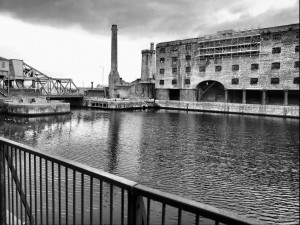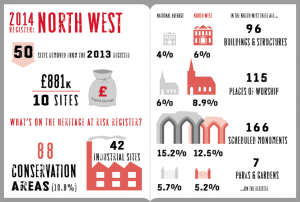Heritage at Risk in Liverpool
Liverpool Landscapes was a blog charting new discoveries, news and developments affecting Liverpool's historic environment. It was regularly updated between 2007 and 2016.
Liverpool Landscape has now been retired, and most of the less time-dependent articles moved to Historic Liverpool.

Great work has been done to improve the lot of certain vulnerable historic buildings in Liverpool. Four buildings have been removed from the Heritage at Risk Register:
- North Warehouse, Stanley Dock Village;
- the ex-Royal Insurance HQ Building, North John Street;
- the Laundry and Laundry Cottage, Croxteth Park;
- the former St Andrew’s Church, Rodney Street.
You can read about the plans for these buildings in the not-proofread Liverpool Echo article: English Heritage praises Liverpool for historic buildings.
English Heritage’s long-running Heritage at Risk Register keeps tabs on the country’s most vulnerable buildings. Each year the list is updated, taking account of the valuable work done on buildings formerly threatened by damage, neglect or vandalism, as well as structures which are falling into disuse.
One of the cases highlighted by English Heritage is Anfield Cemetery. This is of incredible cultural and social significance to Liverpudlians, and is still in use (I have grandparents’ ashes buried there). However, only one of the three original chapels still stands – the Nonconformist – with the Anglican and Roman Catholic chapels long gone. Two catacomb buildings once flanked the Anglican chapel, and these are now roofless, fenced off and deteriorating.
Parts of the rest of the cemetery are under threat too, with railings rusting away, monuments themselves weathering and eroding, and the Cherry Lane entrance needs attention. Modern invasions – street signs and other “clutter” – need to be looked at.
The site has been on the Heritage at Risk Register since 2012, but things are looking up: it’s now within the Anfield Strategic Regeneration Framework boundary, and has apparently got a ‘Friends of’ group (though I can’t find any recent evidence of this – do you know of such a thing?). The group is apparently hoping to turn the remaining chapel into a genealogy/local history centre. Best of luck to them!
And best of luck to the rest of the projects bringing Heritage at Risk back into productive use. There can’t any longer be doubt that old buildings have great potential, and there’s so much more positive feelings towards iconic buildings when they’re restored compared to the reactions you get when you plonk a brand new building in a treasured location. You know what I’m talking about… 😉




